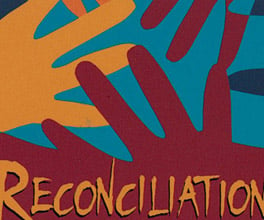Reconciliation Convention 1997
The official movement toward national reconciliation began in 1991 with the establishment of the Council for Aboriginal Reconciliation. The Council set out some of the key goals of reconciliation in Australia:
- to educate all Australians about Indigenous issues
- to improve economic and living standards for Indigenous people,
- to acknowledge the unfair and often inhumane treatment of Indigenous Australians throughout history.
In 1997, Australia took a huge step towards these goals with the Australian Reconciliation Convention, a forum for Australians to gather and discuss Indigenous issues. Almost 1800 people attended, including lawyers, teachers, health workers, religious leaders, government officials and students all of whom had participated in meetings across the country in the year prior to the Convention.
But the events of the conference were overshadowed by the opening address made by then Prime Minister, the Hon. John Howard MP:
In facing the realities of the past, [...] we must not join those who would portray Australia's history since 1788 as little more than a disgraceful record of imperialism [...] such an approach will be repudiated by the overwhelming majority of Australians who are proud of what this country has achieved although inevitably acknowledging the blemishes in its past history.
– John Howard, 27 May 1997
The Hon John Howard MP, 1997, 'Opening address by the Prime Minister', Australian Reconciliation Conference, viewed April 2011, <http://www.austlii.edu.au/au/other/IndigLRes/car/1997/4/pmspoken.html>.
Many Australians interpreted John Howard's use of the word 'blemish' as undermining the significance of years of conflict between Indigenous and non-Indigenous Australians.
By referring to the plight of Australia's Indigenous people as a mere ‘blemish', Howard dismissed centuries of dispossession and violence as insignificant. Indigenous delegates in the audience stood and turned their backs on the Prime Minister in protest.
In spite of this controversy, the Convention was a great sucess. Workshops and discussions led to an atmosphere of understanding, healing and emotional exchange between Indigenous and non-Indigenous people.
The Convention succeeded in bringing the issue of reconciliation into the national consciousness, and Howard's words couldn't stop delegates working toward, and hoping for, a better future.











